Livestreaming on YouTube with an iPhone: Complete Guide
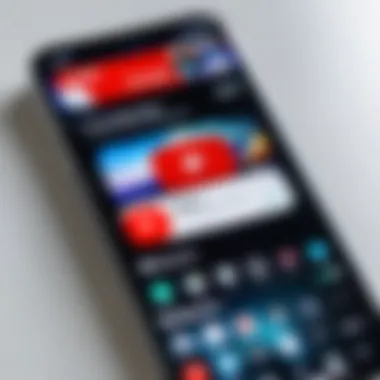
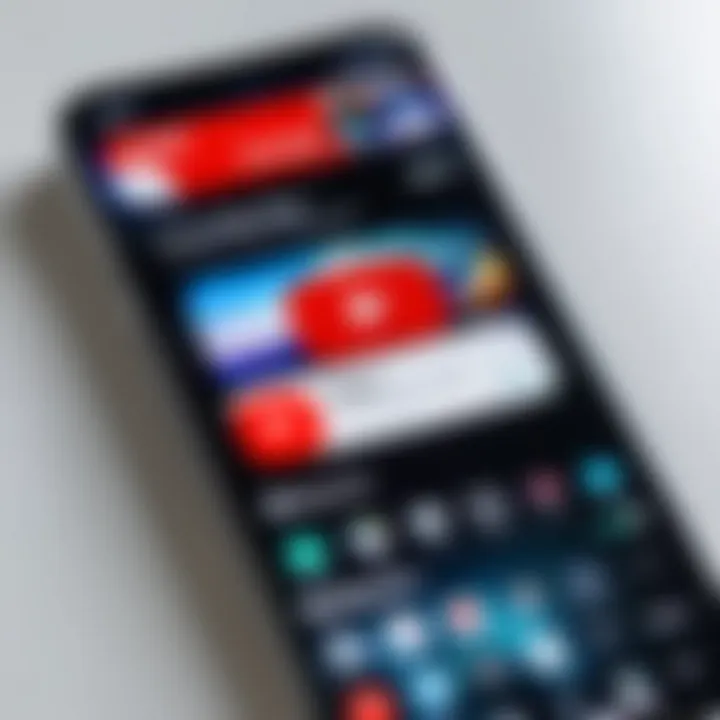
Intro
In today's digital age, livestreaming is not just a trend; it's become a critical way for content creators to communicate, entertain, and engage with their audiences. With the rise of platforms like YouTube, everyone from hobbyists to professionals is jumping into the world of broadcasting. Thanks to the iPhone's powerful camera and seamless interface, streaming live is as straightforward as pushing a few buttons. This guide aims to help you navigate the steps necessary to master livestreaming on YouTube via your iPhone, shedding light on the requirements, the setup process, common hurdles, and best practices to elevate your streaming experience.
Product Overview
For anyone diving into livestreaming, understanding the capabilities of their device is crucial. Apple has designed the iPhone not just as a phone but as a powerful tool for creators. The latest models boast improved cameras, enhanced performance under various lighting conditions, and high-quality audio recording. When using an iPhone for streaming, these elements become vital in delivering a professional look to your broadcast.
Key Features
- High-Quality Camera: Most recent iPhones come with high-resolution lenses capable of shooting in 4K. This feature is pivotal for producing sharp and clear video.
- User-Friendly Interface: The iOS interface is intuitive, making it easier to navigate streaming options even for those who aren’t particularly tech-savvy.
- Wi-Fi and Network Capabilities: The iPhone supports various connectivity options which are essential for stable streaming. Ensuring that you have a healthy internet connection can significantly enhance the transmission of your live video.
- Built-in Editing Tools: The Photos and iMovie apps offer basic editing features, which can be handy for polishing your video content mid-stream.
Specifications
The experience of streaming depends significantly on the specifications of your device:
- Processor: A powerful A-series chip is vital for managing live effects and streaming tasks efficiently.
- RAM: More memory means smoother performance; recent iPhones range from 3GB to 6GB of RAM, depending on the model.
- Storage Options: With sizes ranging from 64GB to 512GB, selecting a model that aligns with your storage needs is important, especially when recording live content directly to your device.
Performance Analysis
Now that we’ve covered the key characteristics of the iPhone, let’s take a closer look at how well it performs during livestreaming.
Speed and Efficiency
The iPhone, particularly the latest models, is designed for multitasking. When streaming, it efficiently handles video processing, allowing creators to focus on delivering content rather than stressing over technical glitches. The feed remains stable for periods of continuous use, provided there is adequate internet bandwidth.
Battery Life
One crucial aspect to consider when livestreaming is battery consumption. Depending on your iPhone model, battery life can vary. Livestreaming typically drains the battery quickly, especially when running high-resolution video. Utilizing features such as low-power mode when not actively streaming can help prolong battery life. Additionally, having a power bank handy can ward off unexpected interruptions mid-stream.
Tip: Always ensure your device is fully charged before going live. Utilize a power source if planning for extended sessions to maintain uninterrupted streaming.
With a grasp on the specifications and performance aspects of the iPhone for livestreaming on YouTube, you're primed to ensure a professional-sounding and clear-looking broadcast. Let’s delve deeper into the actual process of setting up your livestream.
Prelims to Livestreaming
Livestreaming has dramatically changed the way we interact with content and each other in the digital realm. As technology evolves and our devices become more powerful, the ability to broadcast live events has never been more accessible or important. Especially in a world where immediate engagement is paramount, understanding the nuances of livestreaming can give anyone a significant advantage, whether you're a budding content creator or a seasoned media professional. This section delves into the fundamentals of live streaming, setting the stage for our detailed guide on going live using your iPhone.
Understanding Livestreaming
At its core, livestreaming involves broadcasting real-time video and audio content over the internet. Unlike traditional video, where the creator edits and uploads, live streams occur in the present, creating an urgency that can hook an audience. This immediacy allows for spontaneous interactions, feedback, and engagement from viewers, turning passive watchers into active participants.
Consider platforms like YouTube—where more than a billion users come to watch content daily. According to analytics, people gravitate towards live videos because they feel a connection with the broadcaster. Whether it’s a Q&A session, a tutorial, or a behind-the-scenes look, live content fosters community. Thus, grasping the basics of livestreaming can empower individuals to share their passions and insights in a meaningful way.
The Rise of Live Content
Over recent years, the demand for live content has surged. In fact, the statistics show that audiences are eager for real-time experiences. A reported increase of more than 80% in live streaming views on YouTube within just a year signifies that users are hungry for authentic interactions over curated content. There are several reasons for this trend:
- Instant gratification: Viewers can get information or entertainment right away.
- Real-time interaction: The ability to comment and interact directly makes the viewer a part of the experience.
- FOMO (Fear of Missing Out): People don’t want to miss out on live events, which creates urgency in tuning in.
Because of these reasons, platforms like YouTube have made it easier than ever to go live from devices we already carry around—our smartphones, especially the iPhone. These shifts highlight the importance of learning effective livestreaming techniques to stand out in the bustling sea of content.
Getting Started with YouTube Livestreaming
Getting started with YouTube livestreaming marks a significant step into the pulse of real-time content creation. This section dives into the foundational elements that empower you to harness your iPhone’s capabilities for streaming. As the demand for immediate and interactive content occupies a larger segment of today’s media landscape, understanding the basics before you dive in is crucial. Getting your footing right can streamline your process and amplify your reach.
Requirements for Using an iPhone
Before you hit the ground running, there are a few essentials to check off your list. First, you need a reasonably up-to-date iPhone; ideally, this would be at least an iPhone 6 or newer. This ensures that your device possesses the necessary processing power to handle stream encoding and your audience won’t be left watching an endless buffer.
- iOS Version: Make sure your device is running iOS 12 or later. Streaming with older versions may lead to compatibility issues, especially with apps and performance.
- Storage Space: Running low on space can be a major bottleneck. Aim for at least a few gigabytes of free space to accommodate app needs and live event storage.
- Stable Internet Connection: This is non-negotiable. A reliable Wi-Fi connection is your best friend. Cellular data may work in a pinch, but deliverability can vary wildly based on your service provider and location.
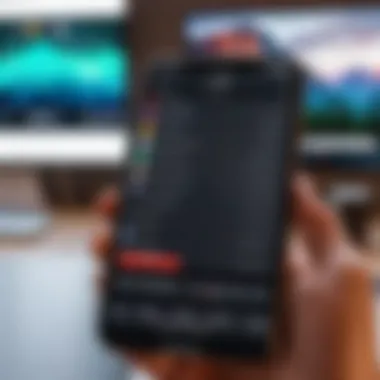
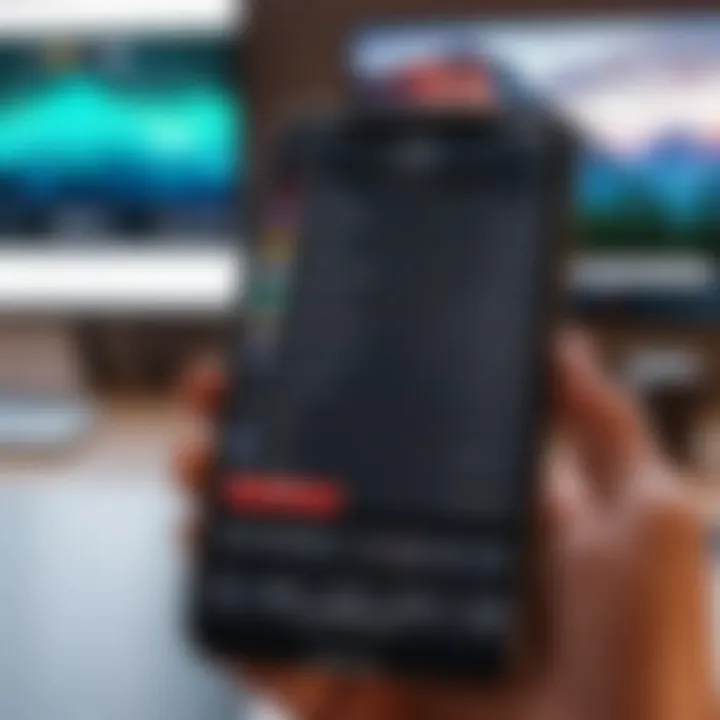
Creating a YouTube Channel
Creating a YouTube channel is your digital stage where you’ll showcase your content. In this day and age, setting up a channel is a straightforward process, but don’t let that fool you into thinking it isn’t important.
- Sign In to YouTube: If you haven’t already, create a Google account. This is your ticket in.
- Navigate to YouTube Settings: Click on your profile picture, then select 'Your Channel'. From there, follow prompts to create your channel.
- Customize Your Channel: Fill out your profile with a compelling description and artwork. First impressions matter, so reflect your content style.
Once you’ve set up shop, you can start uploading pre-recorded videos and getting a sense of what resonates with your audience.
Enabling Live Streaming on Your Channel
This is where the magic begins—turning your channel from a static profile to a vibrant platform for real-time interaction. Before you can go live, you’ll need to enable this feature.
- Access YouTube Studio: Sign into YouTube and head to the YouTube Studio dashboard.
- Verify Your Account: You need to have a verified account to access livestreaming. This typically involves providing a phone number for verification.
- Wait for 24 Hours: Once your account is verified, you may have to sit for a bit. YouTube generally requires a waiting period for new accounts before enabling livestreams.
- Final Setup: After 24 hours, return to the YouTube Studio, go to the ‘Create’ button, select ‘Go Live’, and confirm that everything is set.
In wrapping this up, getting started with YouTube livestreaming is not just about technical setups; it’s also about understanding the ecosystem you’re entering. Nailing down the essentials can elevate your potential, and ensure you are ready when it’s time to hit that Live button.
Setting Up Your iPhone for Streaming
Livestreaming on YouTube through your iPhone isn’t merely about hitting the start button—it’s a nuanced process. Setting up your iPhone correctly significantly improves stream quality and viewer experience. The heart of this setup involves three core aspects: downloading the YouTube app, adjusting necessary settings, and ensuring your device runs smoothly during the broadcast. By paying attention to these details, streamers can avoid potential pitfalls and create engaging content that resonates with audiences.
Downloading the YouTube App
The first step in anything YouTube-related is having the correct tools at your disposal, and the YouTube app is ground zero for that. Downloading the YouTube app from the App Store is crucial because it provides the interface to connect directly to the YouTube platform. Once installed, it allows users to not just watch videos but stream live content effortlessly.
Before tapping the download button, ensure your iPhone has sufficient storage. This can prevent lag or unexpected crashes. Once installed, log in with your Google account, and you'll be ready to stream. This process might seem elementary, but missing this essential step can throw a wrench in your plans.
Configuring Your iPhone Settings
Adjusting Camera Settings
Proper camera settings determine how your live stream will appear to viewers. An optimal resolution is essential as it contributes to clearer, more engaging visuals. Most iPhones come equipped with robust camera capabilities, including 4K video recording. Utilizing these features can significantly enhance overall quality.
- Key Characteristic: Many streamers underestimate the importance of lighting and focus. When adjusting settings, be aware of how your surroundings affect visibility.
- Unique Feature: The ability to toggle between the front and rear cameras provides flexibility. Whether interacting with your audience or showcasing surroundings, this can add a dynamic element to your stream.
- Advantages: High-quality video attracts more viewers and keeps them engaged. However, poor adjustments can lead to grainy footage dampening the viewer's interest early on.
Ensuring Wi-Fi Connectivity
A stable and reliable internet connection is the backbone of successful streaming. Before you go live, ensuring your iPhone is connected to a strong Wi-Fi network is a top priority. This aspect can't be overstated. Weak signals can lead to interruptions or dropouts, frustrating viewers and hurting engagement.
- Key Characteristic: Wi-Fi connectivity enables higher-quality streams without using your phone’s data, helping to conserve it during extended broadcasts.
- Unique Feature: Many modern routers support dual-band signals, which allow users to connect to either 2.4GHz or 5GHz options. The latter provides better speeds but with a shorter range. Selecting the right band can be crucial based on your distance from the router.
- Advantages: Streamlining your connection can prevent pesky buffering that drives viewers away. Disadvantages include potential connectivity loss, especially if moving around while streaming.
Checking Battery Performance
Lastly, assessing your iPhone’s battery performance is essential for uninterrupted livestreaming. Battery life depletes quicker during high-demand tasks like streaming. Understanding your device’s battery health will ensure you are not caught off guard mid-broadcast.
- Key Characteristic: The battery icon's indicator lets you know at a glance how much power remains. However, there are more nuanced settings you can check in the iPhone’s battery section.
- Unique Feature: Enabling Low Power Mode can extend battery life, but at the cost of performance quality. Knowing when to use it, or charge in between streams, becomes part of the strategy.
- Advantages: Taking care of your battery boosts overall performance and extends streaming time. On the flip side, neglecting battery health might leave you scrambling for a charger mid-stream, ruining your well-laid plans.
Tip: Consider investing in a portable charger to keep your iPhone powered up during lengthy sessions.
By ensuring that these elements are set up correctly, you pave the way for a smoother, more professional livestream. With your iPhone ready to tackle the challenges of broadcasting, you can focus more on creating engaging content and interacting with your audience.
Initiating a Livestream on YouTube
Initiating a livestream on YouTube holds a pivotal role in this guide, serving as a gateway to reaching an audience in real-time. Many creators today view livestreaming not just as a trend, but as an essential component of their content strategy. It offers a level of engagement that recorded videos simply can’t match. Live broadcasts create immediacy and interaction, allowing content creators to connect with their audiences, gather instant feedback, and foster a sense of community.
Before diving into the mechanics, it’s crucial to understand the various elements that come into play when initiating a livestream. Not only do you need to optimize your hardware and software setup, but understanding the nuances of your channel's audience can influence the success of your stream.
Accessing the Stream Option
To kick off a stream, you must first access the streaming options within the YouTube app. This process can vary slightly depending on whether you are using a channel with set requirements or a new channel. To access the stream option, open the YouTube app and look for the camera icon, which serves as your entry point to livestreaming. This button typically appears at the top of the home page or on the bottom of the screen.
Once you select this icon, you will see options for “Upload a video” and “Go Live.” Opting for “Go Live” brings you to the settings page where you can tailor the livestream to your needs.
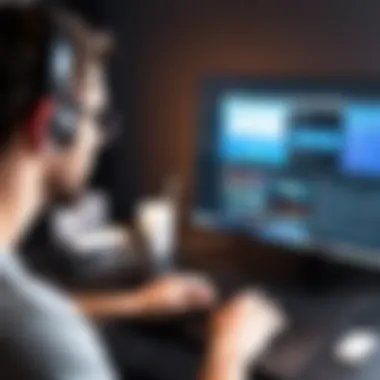
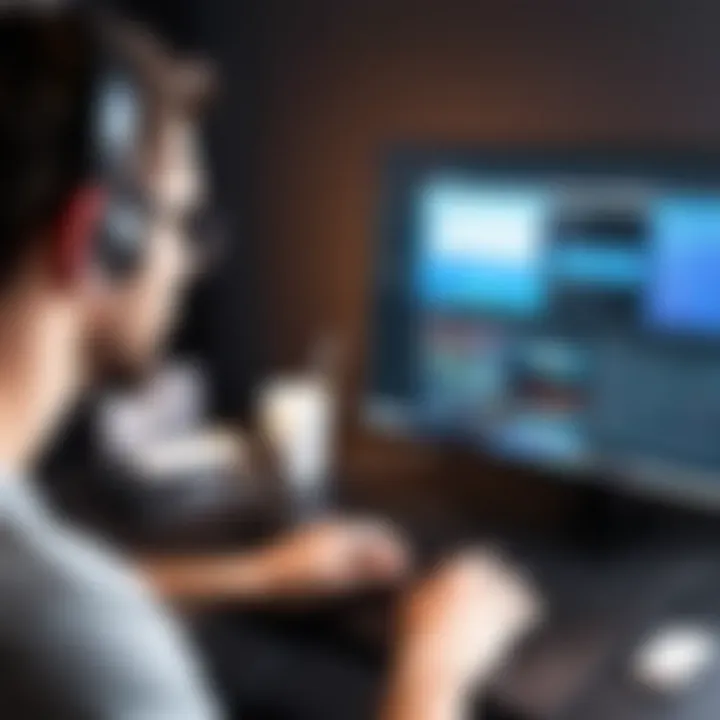
Configuring Stream Details
This step is crucial as it determines how your audience interacts with your content. Streaming on YouTube is not just about turning on the camera; it involves strategic planning to ensure you attract visitors and keep them engaged throughout your broadcast. Here’s where you’ll manage several details:
Setting an Appropriate Title
When crafting the title of your livestream, clarity remains key. A well-thought-out title not only attracts viewers but also provides them with a glimpse into the content. Engaging titles can boost visibility; think about including keywords that your target audience is likely to search.
For instance, instead of a vague title like "My Live Stream," consider something more descriptive, like "Live Q&A: Tips for Starting a YouTube Channel". This way, viewers know exactly what to expect. A precise and inviting title can greatly enhance your stream’s outreach potential.
Choosing Privacy Settings
The privacy settings you choose can significantly impact your livestream's reach. You can opt for options such as Public, Unlisted, or Private. Choosing Public allows anyone to find and join your stream, promoting maximum engagement. On the other hand, Private settings restrict access, limiting the viewers to a specified set of accounts.
This decision often reflects the goal of your livestream. If you’re aiming for broad interaction, public is ideal. But if it is a more personal or specific event, be sure to choose accordingly.
"What you share online can either cement your brand or tarnish it; choose wisely."
Adding Tags and Descriptions
Finally, tags and descriptions serve as the backbone of discoverability. Tags help YouTube’s algorithm to categorize your content correctly, enhancing the likelihood of your stream appearing in related suggestions. Additionally, a well-crafted description can provide context and highlight vital points of your stream, encouraging viewers to tune in.
Consider using a mix of broad and niche tags to capture a wider audience spectrum. Include details about what viewers can expect, especially if you're planning to tackle various topics during your stream.
In essence, these configurations not only set the stage for your broadcast but also construct a foundation for visibility, engagement, and overall success of your livestream. Ensure to consider each detail thoughtfully.
Going Live: Best Practices
Livestreaming on YouTube isn't just about hitting the "Go Live" button; it's an art form. The practices you adopt can make or break the experience for your viewers. Not only do good practices enhance viewer interaction, but they also help improve the overall quality of your broadcast. Let’s delve deeper into two key aspects of going live effectively.
Engaging Your Audience
To make your livestream memorable, engaging with your audience is key. This isn't just about talking to them; it's about creating a dialogue. Take the time to acknowledge comments and questions in real-time. Have a plan for how you want to interact; maybe run polls or ask direct questions that encourage responses. For instance, during a gaming stream, you might ask viewers to suggest strategies or vote on next moves. Engaging your audience can create a sense of community and belonging. A vibrant interaction can also keep viewers tuned in longer, which ultimately boosts your channel’s engagement metrics.
Maintaining Stream Quality
Optimal Lighting Conditions
Lighting can be your best friend or worst enemy when streaming. The right kind of light sets the mood and improves visibility. Natural light is often considered the gold standard for illuminations. It is flattering and makes for smooth visuals. However, if your streaming schedule clashes with daylight hours, investing in some adjustable LED lights can create the same effect. Position the lights in front of you, so they illuminate your face clearly without being overly harsh.
Advantages of optimal lighting conditions include:
- Better viewer retention due to higher video quality.
- Establishes professionalism, showing you care about your content.
- Enhances the emotional tone of your stream – for instance, softer lighting creates a relaxed atmosphere.
On the flip side, poor lighting can lead to grainy video and an uninviting ambiance, driving viewers away before they even get the chance to engage with your content.
Using Quality Audio Equipment
Audio quality is just as critical, if not more so than video quality during your livestream. Viewers may stay for bad video, but if they can't hear you, they'll click away faster than you can say "Wi-Fi connection issues." Using high-quality microphones can ensure your voice is clear and your commentary is engaging.
Opt for condenser mics or lavalier options that can provide crisp sound. An often overlooked feature is a pop filter, which minimizes the harsh sounds from plosive consonants.
Unique features of quality audio equipment:
- Directional Mics: These microphones capture sound only from your direction, minimizing background noise.
- Noise Cancelling: Some audio equipment comes with noise-canceling technology that filters out unwanted sounds, enhancing clarity.
"You can have the best content in the world, but if your viewers can't see or hear you properly, it's like shouting into the void."
Remember, fruitful livestreams are built on the foundation of engaging conversations paired with top-notch audio-visual quality.
Post-Livestream Actions


Engaging in livestreaming on YouTube is just the tip of the iceberg. Once the stream wraps up, there’s still plenty of work to do. Post-livestream actions play a pivotal role in maximizing the impact of your broadcast. These tasks not only help you gauge performance but also ensure the content continues to reach and engage your audience long after it has aired.
Firstly, reviewing your stream performance provides critical insight into how well your broadcast met its goals. By analyzing viewership analytics, you'll uncover what content resonated with viewers, along with areas that might need improvement. Tools like YouTube Analytics allow streamers to dive into a treasure trove of data, such as average watch time, peak concurrent viewers, and audience demographics. Understanding these metrics informs your future livestreams, making sure you’re not spinning your wheels without direction.
Next, editing and sharing your livestream are essential components of your follow-up strategy. Many viewers might catch the stream after it has ended; hence, it’s crucial to present your content in a polished manner. Editing allows you to trim off any awkward beginnings or ends, add engaging intros or outros, and insert captions or overlays for better clarity.
Reviewing Stream Performance
After your livestream concludes, it’s easy to just brush it off and move on to the next project; however, that’s a big mistake. Reviewing the stream performance can reveal some surprising insights. Take time to sift through the analytics provided by YouTube. Look for metrics like:
- Total views: Gives you a sense of how many people tuned in.
- Average view duration: Indicates how engaged viewers were—did they stick around or drop off early?
- Engagement rate: This combines comments, likes, and shares, showing how interactive your audience was.
Furthermore, comparing these statistics against your goals can help shape your content. If you aimed for 100 concurrent viewers and hit 150, that’s a win! But, if the majority left after a few minutes, you may need to rethink your approach.
Editing and Sharing Your Livestream
Once you’ve analyzed the numbers, the real magic happens with editing. This is where you polish the raw footage to enhance viewer experience. Start by cutting out any unnecessary parts—those moments of silence or technical difficulties can easily derail viewer’s attention.
Consider adding timestamps in the description. A viewer may not have time to watch the full stream, but they might be interested in specific segments. Giving them quick access to highlights can keep them engaged.
Finally, update your social media platforms with a shareable link to the edited video. This draws in viewers who missed the live event, amplifying your reach. A quick post on Facebook or Twitter, coupled with an engaging caption, can spark interest and direct traffic back to your channel.
By diligently handling these post-livestream actions, you not only improve your craft but also enrich your audience's experience, leading to greater loyalty and viewer retention.
Troubleshooting Common Issues
When livestreaming on YouTube via iPhone, encountering problems isn’t just a last-minute inconvenience; it can make or break the experience. Understanding how to quickly identify and solve common issues is vital for ensuring your audience enjoys continuous and high-quality streams. From glitches disrupting your viewers’ experience to connectivity hiccups, troubleshooting is an essential skill for anyone looking to harness the power of livestreaming.
Connectivity Problems and Solutions
One of the most frequently faced obstacles while streaming is connectivity issues. Nobody wants their livestream to freeze in the middle of an important moment. Here are some tips to nip these problems in the bud:
- Check Wi-Fi Connection: Before hitting the "Go Live" button, confirm that your Wi-Fi signal is strong. If you're in a weak signal area, consider moving closer to the router or switching to another network.
- Reduce Network Load: If multiple devices are hogging the same bandwidth, it could result in buffering. Making sure no one else is streaming movies or playing heavy online games on the same network during your livestream can often ensure better performance.
- Switch to Mobile Data If Necessary: In situations where Wi-Fi just won't cut it, relying on your mobile data can save the day. Just keep an eye on your data limits.
"Preparation is the key. Always check your connection settings before going live to avoid facepalm moments later."
- Router Reboot: Sometimes, a simple reboot of your router can resolve connectivity woes as it refreshes the connection.
Audio/Video Sync Issues
Audio and video sync issues are another common pitfall for livestreamers. Nothing frustrates viewers more than hearing something out of sync with what they see.
- Use Headphones: This is a simple yet effective tip. Using headphones while streaming helps reduce echo and ensures that the audio is transmitted clearly.
- Lower Resource Competing Apps: If you have heavy apps running in the background, they could drain your device’s processing power, causing delays. Close unnecessary applications to prioritize your stream’s performance.
- Hard Reset Your App: If problems persist, quitting and reopening the YouTube app can serve you well. Sometimes, the app itself just needs a breather.
- Adjust within OBS if Streaming through a Encoder: If you're using a streaming encoder like OBS, there are options for syncing audio and video. Adjust these settings according to your preference.
In summary, handling troubleshooting properly not only saves you the hassle during a live stream but also presents you as a capable and professional streamer to your audience. With these common hiccups addressed, you're all set to deliver compelling content that captivates and retains your viewers.
The End
In wrapping up the discussion on livestreaming via iPhone on YouTube, it's crucial to highlight the significance of the steps and details laid out in the article. The ability to navigate the waters of livestreaming not only enhances personal or business visibility but also cultivates a community of engaged followers. From setting up your device and ensuring connectivity to knowing how to troubleshoot issues that might crop up—all these aspects work together harmoniously to create a seamless streaming experience.
Recapping the Key Steps
To capitalize on your in-depth understanding of livestreaming, let's recap the key steps to ensure nothing slips through the cracks:
- Check Requirements: Always start with the basic requirements for streaming using your iPhone. Ensure your device is compatible with the latest updates of the YouTube app.
- Channel Setup: Create and enable live streaming on your YouTube channel. This is foundational for going live.
- Device Configuration: Properly configure your phone settings. This step includes adjusting camera settings for optimal quality, securing reliable Wi-Fi connections, and checking battery performance to avoid unforeseen interruptions.
- Stream Initialization: Access the stream option within the YouTube app, configure your stream details like title and privacy settings, and add descriptive tags to enhance visibility.
- Engagement and Quality: During the livestream, focus on engaging your viewers effectively while maintaining quality in audio and video, which are sometimes keys to keeping an audience glued to your content.
- Post-Stream Actions: After wrapping up, take a moment to review your stream performance and edit it for future sharing.
Keeping these steps in mind will make you well-prepared to tackle the ever-evolving landscape of live content creation.
Encouraging Future Livestreams
Now that you have laid down a solid foundation for livestreaming, it’s time to nurture that momentum. The world of livestreaming is dynamic and continually evolving, presenting opportunities to sharpen your skills and grow your audience.
"Engagement is key; keep experimenting with content types—Q&As, tutorials, or behind-the-scenes peeks—allowing your creativity to flow."
Capitalizing on your initial experiences, consider setting a regular streaming schedule. Consistency builds audience trust and keeps your viewers knocking at your virtual door. Review feedback, analyze performance metrics, and adapt your approach accordingly to foster community interaction and growth.
Ultimately, don't hesitate to try new topics, collaborate with peer streamers, or integrate emerging technologies. Livestreaming is as much about creating connections as it is about the content itself. So, get out there and make your mark in the world of livestreaming!



